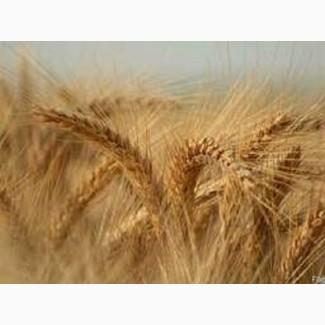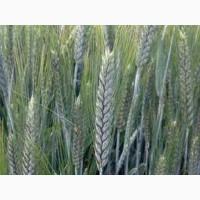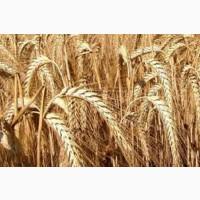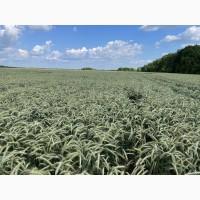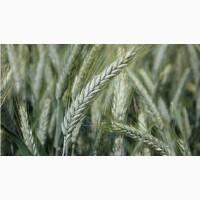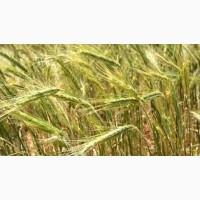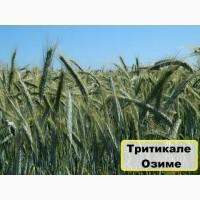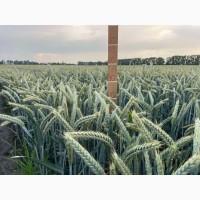Sell / buy
Winter triticale seeds Rarity, Kharkiv region.
Price12 000 UAH. / ton
Region:all of Ukraine,
Kharkiv region.
Updated:
Purpose of grain: Seed material
Quantity: 200 tons| ||147
RARITY
A variety of graintriticale for winter baking purpose.
Year of entry into the Register of plant varieties of Ukraine - 2008.
Varietal characteristics: variety of lutescens. The ear is spineless, white, spindle-shaped, long (9–12 cm), dense, with spine-like serrated processes 0.5–3.5 cm long. Pubescence under the ear is weak to strong. Spikelet scales are long, lanceolate, of medium width, the shoulder is narrow, beveled. The keel is well defined, the tooth is sharp, short.Grain red, oval-elongated, smooth, mass of 1000 grains 40–52 g.(//tractor-service.com)
Biological features: medium-ripening, duration of the growing season 275-285 days, plant height 110-130 cm, stem strong, resistant to lodging. Winter hardiness is above average (7.5 points). Highly resistant to drought and diseases.
Economic characteristics: the potential yield of grain is higher than 9.0 t/ha. In the experiments of competitive variety testing (2000 - 2012), the average yield of the Rarity variety was 6.20 t/ha, which is 0.52 t/ha higher than the level of the Amphidiploid 256 standard.
Flour milling, baking and mixing properties are excellent. Yellow flour, semolina-like, with a high yield (78-85%). On average, over nine years, the content of protein in grain was 11.8%, gluten in flour was 18.8%, the VDC indicator was 49.2 o. p., strength of flour 193 o. a., dough elasticity 71.4 mm, extensibility 74.4 mm, volume of bread when it is made without improvers 530 ml, overall bakery score 9.0 points. According to the time of formation, resistance to kneading, stability, etc. the Rarity variety is two to three times higher than the grain fodder standard Amphidiploid 256. The indicators of dough thinning, general valorimetric evaluation, volume yield of bread from 100 g of flour and general bakery evaluation of the variety meet the requirements for valuable and strong wheat. Rarity has a high mixing ability, effectively improves wheat of classes IV-VI.
Agrotechnical requirements: recommended for sowing on occupied fields, perennial grasses, corn for silage. Optimal sowing dates are September 1-15. Sowing rates are 3 to 5 million similar seeds per 1 g, depending on the time of sowing and predecessors. It is intended for the cultivation of ecologically clean grain for the production of high-quality dietary bread.
A variety of graintriticale for winter baking purpose.
Year of entry into the Register of plant varieties of Ukraine - 2008.
Varietal characteristics: variety of lutescens. The ear is spineless, white, spindle-shaped, long (9–12 cm), dense, with spine-like serrated processes 0.5–3.5 cm long. Pubescence under the ear is weak to strong. Spikelet scales are long, lanceolate, of medium width, the shoulder is narrow, beveled. The keel is well defined, the tooth is sharp, short.Grain red, oval-elongated, smooth, mass of 1000 grains 40–52 g.(//tractor-service.com)
Biological features: medium-ripening, duration of the growing season 275-285 days, plant height 110-130 cm, stem strong, resistant to lodging. Winter hardiness is above average (7.5 points). Highly resistant to drought and diseases.
Economic characteristics: the potential yield of grain is higher than 9.0 t/ha. In the experiments of competitive variety testing (2000 - 2012), the average yield of the Rarity variety was 6.20 t/ha, which is 0.52 t/ha higher than the level of the Amphidiploid 256 standard.
Flour milling, baking and mixing properties are excellent. Yellow flour, semolina-like, with a high yield (78-85%). On average, over nine years, the content of protein in grain was 11.8%, gluten in flour was 18.8%, the VDC indicator was 49.2 o. p., strength of flour 193 o. a., dough elasticity 71.4 mm, extensibility 74.4 mm, volume of bread when it is made without improvers 530 ml, overall bakery score 9.0 points. According to the time of formation, resistance to kneading, stability, etc. the Rarity variety is two to three times higher than the grain fodder standard Amphidiploid 256. The indicators of dough thinning, general valorimetric evaluation, volume yield of bread from 100 g of flour and general bakery evaluation of the variety meet the requirements for valuable and strong wheat. Rarity has a high mixing ability, effectively improves wheat of classes IV-VI.
Agrotechnical requirements: recommended for sowing on occupied fields, perennial grasses, corn for silage. Optimal sowing dates are September 1-15. Sowing rates are 3 to 5 million similar seeds per 1 g, depending on the time of sowing and predecessors. It is intended for the cultivation of ecologically clean grain for the production of high-quality dietary bread.
|
Author, contacts | |
Haskom Trade LLC / || |181відгуки, інфо. / activity evaluation | |
|
Phone:
+38(xxxxxx
show
| |
| http://www.khaskom.com.ua | |
All user ads ~603 | |
Ad ID: #939624
(added by a registered user, registration date: 28-12-2016)
Added / Updated: 02-09-2024 07:07 (current, until: 02-09-2025)
Permanent Ad Address:
Shows / views for today: ?, total: ?
Similar ads
There are many interesting...
Filters: Triticale seeds
Total || |39036 similar adsin the category "Triticale"
